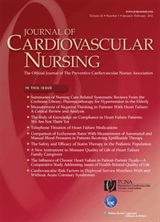
Cardiac arrest is when the heart stops beating. It is a medical emergency that, without immediate medical intervention, will result in cardiac death within minutes. When it happens suddenly, it is called sudden cardiac arrest. Cardiopulmonary resuscitation (CPR) and possibly defibrillation are needed until further treatment can be provided. Cardiac arrest results in a rapid loss of consciousness, and breathing may be abnormal or absent.

Cardiopulmonary resuscitation (CPR) is an emergency procedure consisting of chest compressions often combined with artificial ventilation in an effort to manually preserve intact brain function until further measures are taken to restore spontaneous blood circulation and breathing in a person who is in cardiac arrest. It is recommended in those who are unresponsive with no breathing or abnormal breathing, for example, agonal respirations.

Electrocardiography is the process of producing an electrocardiogram, a recording of the heart's electrical activity through repeated cardiac cycles. It is an electrogram of the heart which is a graph of voltage versus time of the electrical activity of the heart using electrodes placed on the skin. These electrodes detect the small electrical changes that are a consequence of cardiac muscle depolarization followed by repolarization during each cardiac cycle (heartbeat). Changes in the normal ECG pattern occur in numerous cardiac abnormalities, including cardiac rhythm disturbances, inadequate coronary artery blood flow, and electrolyte disturbances.

Asystole is the absence of ventricular contractions in the context of a lethal heart arrhythmia. Asystole is the most serious form of cardiac arrest and is usually irreversible. Also referred to as cardiac flatline, asystole is the state of total cessation of electrical activity from the heart, which means no tissue contraction from the heart muscle and therefore no blood flow to the rest of the body.

In cardiac physiology, cardiac output (CO), also known as heart output and often denoted by the symbols , , or , is the volumetric flow rate of the heart's pumping output: that is, the volume of blood being pumped by a single ventricle of the heart, per unit time. Cardiac output (CO) is the product of the heart rate (HR), i.e. the number of heartbeats per minute (bpm), and the stroke volume (SV), which is the volume of blood pumped from the left ventricle per beat; thus giving the formula:

Ventricular tachycardia is a fast heart rate arising from the lower chambers of the heart. Although a few seconds of VT may not result in permanent problems, longer periods are dangerous; and multiple episodes over a short period of time are referred to as an electrical storm. Short periods may occur without symptoms, or present with lightheadedness, palpitations, or chest pain. Ventricular tachycardia may result in ventricular fibrillation (VF) and turn into cardiac arrest. This conversion of the VT into VF is called the degeneration of the VT. It is found initially in about 7% of people in cardiac arrest.

School nursing, a specialized practice of public health nursing, protects and promotes student health, facilitates normal development, and advances academic success. School nurses, grounded in ethical and evidence-based practice, bridge the gap between health care and education, provide care coordination, advocate for quality student-centered care, and collaborate to design systems that allow individuals and communities to develop their full potentials. A school nurse works with school-aged children in the educational setting. Students experiencing illness or injury during the school day often report to the school nurse for assessment. Administering routine medications, caring for a child with a virus, or stabilizing a child until emergency services arrive after a more serious injury may all be a part of the job requirements. School nurses are well positioned to take the lead for the school system in partnering with school physicians, community physicians, and community organizations. They facilitate access to Medicaid and the State Children's Health Insurance Program to help families and students enroll in state health insurance programs and may assist in finding a medical home for each student who needs one.
Cardiac nursing is a nursing specialty that works with patients who suffer from various conditions of the cardiovascular system. Cardiac nurses help treat conditions such as unstable angina, cardiomyopathy, coronary artery disease, congestive heart failure, myocardial infarction and cardiac dysrhythmia under the direction of a cardiologist.

Labetalol is a medication used to treat high blood pressure and in long term management of angina. This includes essential hypertension, hypertensive emergencies, and hypertension of pregnancy. In essential hypertension it is generally less preferred than a number of other blood pressure medications. It can be given by mouth or by injection into a vein.

The James Cook University Hospital is a tertiary referral hospital and regional major trauma centre in Middlesbrough, North Yorkshire, England located on the A172. Having 1,046 beds, it caters for most specialities and forms part of the South Tees Hospitals NHS Foundation Trust, along with the Friarage Hospital in Northallerton.

Critical care nursing is the field of nursing with a focus on the utmost care of the critically ill or unstable patients following extensive injury, surgery or life threatening diseases. Critical care nurses can be found working in a wide variety of environments and specialties, such as general intensive care units, medical intensive care units, surgical intensive care units, trauma intensive care units, coronary care units, cardiothoracic intensive care units, burns unit, paediatrics and some trauma center emergency departments. These specialists generally take care of critically ill patients who require mechanical ventilation by way of endotracheal intubation and/or titratable vasoactive intravenous medications.
The Mar Augustine Kandathil Memorial Lisie Hospital is a hospital near Kaloor, in Kochi, India. It was founded in memory of Mar Augustine Kandathil, shortly after his demise, according to his original vision and plans, in 1957, as a token of his devotion to St. Thérèse de Lisieux. It is managed by the Archdiocese of Ernakulam. Lisie Hospital is a tertiary referral hospital and one of the largest in Cochin. The Lisie Heart Institute is a major interventional Cardiology and Cardiothoracic centre. It performed nearly 4000 interventional cardiac procedures and cardiac surgeries in 2006. Their team of doctors was reconstituted in 2008 with the joining of Jose Chacko Periappuram as the Head of Cardiac Surgery and Jacob Abraham as the head of Cardiac Anaesthesia. The present team was instrumental in performing the first total arterial bypass surgery on a beating heart and heart transplantation under Dr. Jose Chacko in the state of Kerala.
Cardiac rehabilitation (CR) is defined by the World Health Organization (WHO) as "the sum of activity and interventions required to ensure the best possible physical, mental, and social conditions so that patients with chronic or post-acute cardiovascular disease may, by their own efforts, preserve or resume their proper place in society and lead an active life". CR is a comprehensive model of care delivering established core components, including structured exercise, patient education, psychosocial counselling, risk factor reduction and behaviour modification, with a goal of optimizing patient's quality of life and reducing the risk of future heart problems.
Cardiac PET is a form of diagnostic imaging in which the presence of heart disease is evaluated using a PET scanner. Intravenous injection of a radiotracer is performed as part of the scan. Commonly used radiotracers are Rubidium-82, Nitrogen-13 ammonia and Oxygen-15 water.

The Journal of Cardiovascular Nursing is a bimonthly peer-reviewed nursing journal covering cardiac nursing. It is published by Lippincott Williams & Wilkins and was established in 1986, with Barbara Riege as its founding editor-in-chief. It is the official journal of the Preventive Cardiovascular Nurses Association and its current editor-in-chief is Debra K. Moser.

Holistic nursing is a way of treating and taking care the patient as a whole body which involves physical, social environment, psychological, cultural and religious beliefs. There are many theories that support the importance of nurses approaching the patient holistically and how education on this are there to support the goal of holistic nursing. The important skill to be used in holistic nursing would be communicating skills with patients and other practitioners. This emphasizes that patients being treated would be treated not only their body but also mind and spirit.. Holistic nursing is a nursing speciality concerning the integration of one's mind, body, and spirit with his or her environment. This speciality has a theoretical basis in a few grand nursing theories, most notably the science of unitary human beings, as published by Martha E. Rogers in An Introduction to the Theoretical Basis of Nursing, and the mid-range theory Empowered Holistic Nursing Education, as published by Dr. Katie Love. Holistic nursing has gained recognition by the American Nurses Association (ANA) as a nursing specialty with a defined scope of practice and standards. Holistic nursing focuses on the mind, body, and spirit working together as a whole and how spiritual awareness in nursing can help heal illness. Holistic medicine focuses on maintaining optimum well-being and preventing rather than just treating disease.

Azeezia Medical College Hospital is a hospital located in Kerala. It is a 540-bed multi-specialty hospital. The hospital provides treatment in various specialties, such as medicine, surgery, obstetrics and gynecology, dermatology, psychiatry, pediatrics, orthopedics, ophthalmology, otolaryngology, anesthesiology, radiology, emergency services, and laparoscopic surgery. Super-specialty departments include cardiothoracic, neurology, nephrology, pulmonology, gastroenterology, endocrinology, and neurosurgery. The medical college includes super-specialty units and colleges for medical, dental, and nursing courses. The campus is in a rural area eight km (5.0 mi) from NH-47.
Heart & Lung is a bimonthly peer-reviewed nursing journal covering research on the care of patients with cardiac and pulmonary disorders. It is published by Mosby on behalf of the American Association of Heart Failure Nurses. The journal was established in 1995, with Kathleen S. Stone as its founding editor-in-chief. Its current editor-in-chief is Nancy S. Redeker.












